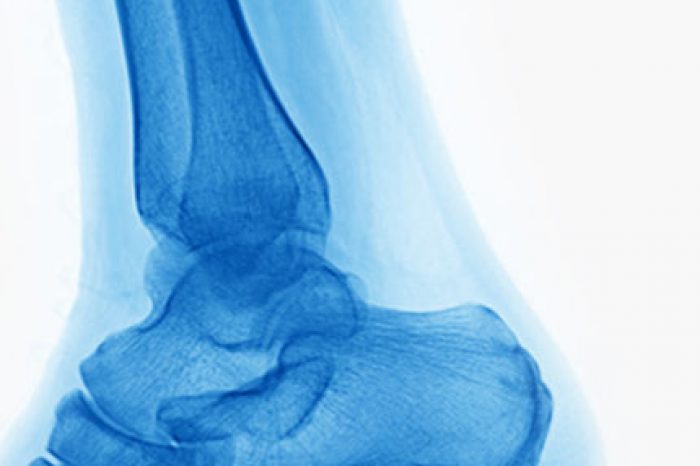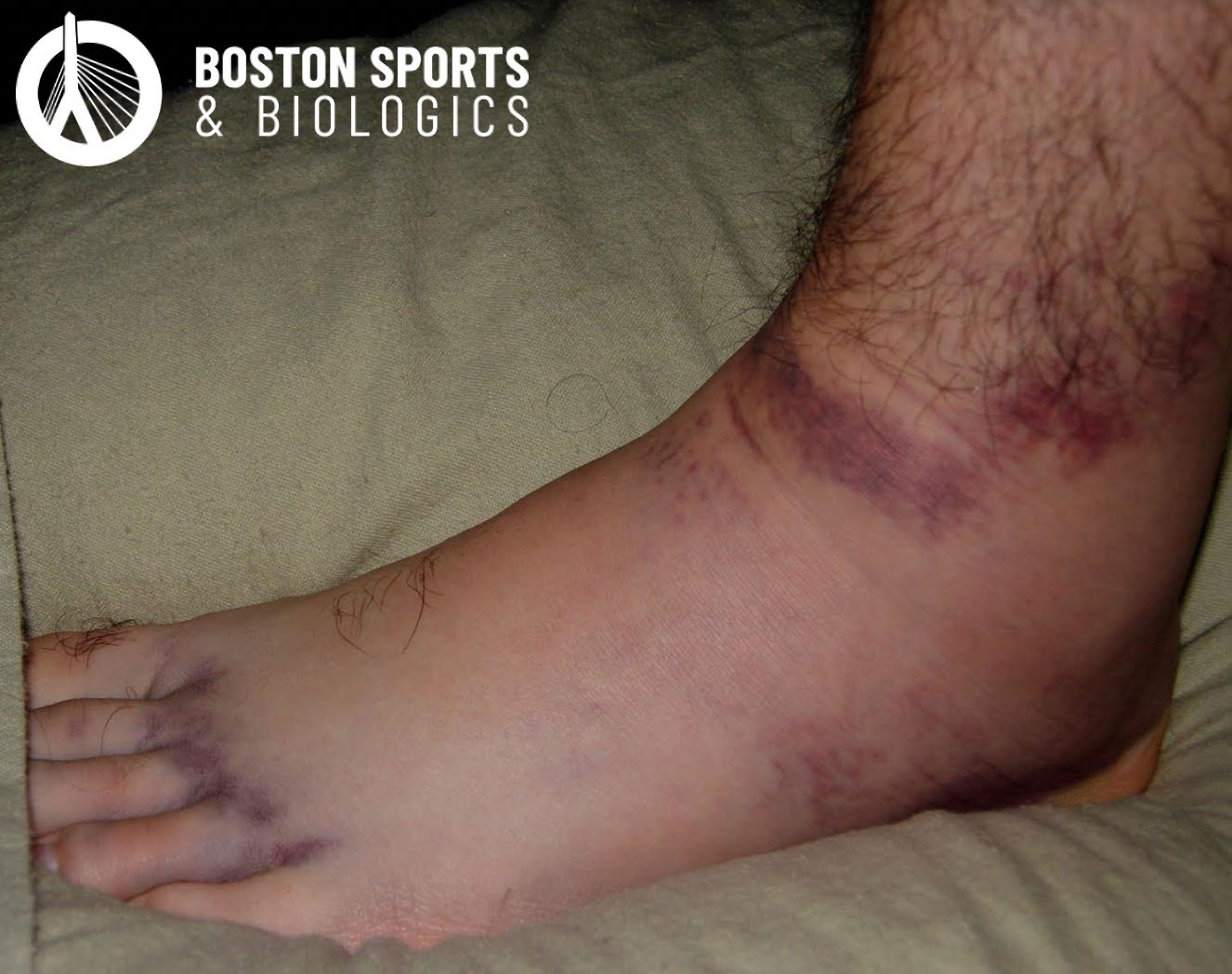
Ankle sprains are one of the most common musculoskeletal injuries in people of all ages with at least >300,000 injuries per year in the United States (Nelson et al, 2007). All it takes is a simple misstep and the ligaments can be stretched or torn. In most cases ankle sprains heel, but in some cases the injured ankle may note heal well. In these cases, the ankle can lose range of motion, stability and result in recurrent sprains.
The ligaments on the outside of the ankle (lateral) are more commonly injured, and include the anterior talofibular ligament, calcaneofibular ligament and posterior talofibular ligament. The syndesmosis, or tibiofibular ligaments, can also be injured in a high ankle sprain.
Types of Ankle Sprains
The severity of ankle injury depends on how much damage occurs, and ankle ligaments are graded based on the severity. The more severe the sprain, the longer the recovery.
Grade of Ankle Sprains |
||
Severity |
Damage |
Recovery Time |
Grade 1 |
Stretch without tear |
1-2 weeks |
Grade 2 |
Partial tear |
2-6 weeks |
Grade 3 |
Full tear |
6+ weeks |
Initially, the goal of treatment is to decrease pain and swelling and often includes rest, ice, compression and elevation. If there is numbness, difficulty bearing weight on the ankle or severe pain and swelling you should contact your clinician to rule out a fracture.
Most sprains are minor, and once the ligaments heal rehabilitation can begin. Therapy usually starts with early range of motion to prevent stiffness, strengthening exercises, balance training and then returning to running and sports.
Almost all ankle sprains can be treated without surgery, and even a complete ligament tears can heal without repair. When an acute ankle sprains does not heal it can lead to chronic ankle instability.
Chronic ankle instability is the most common complication of a severe ankle sprain, and 40% of patients who experience a first-time sprain will develop chronic ankle instability (Doherty et al 2016).

Bruising pattern after grade 3 lateral and high ankle sprain.
Chronic instability can lead to recurrent sprain where the outside of the ankle “gives way,” and it is estimated that approximately 15% of ankle sprains are recurrent sprains (Swenson et al. 2013). Over time this can lead to ankle osteoarthritis (Gribble et al. 2016), and because of these long-term risk recurrent ankle sprains should not just be treated as “new injuries” and should be thought of as an old injury that never really healed. Out of the patients that undergo an ankle replacement or fusion surgery for end stage ankle arthritis 70 to 85% of patients have a history of ankle sprains (Delco et al. 2018).
Symptoms of chronic ankle instability include:
Traditional diagnosis includes not only symptoms and history, but examining the ankle for instability, MRI images or musculoskeletal ultrasound to grade the tear.
In cases where patients have ongoing problems, treatments include physical therapy, bracing and medications. In some cases, a foot and ankle surgeon will recommend surgery to repair or reconstruction of the damaged ligament(s).
PRP injection for a chronic ATFL sprain.
There is evidence for platelet rich plasma (PRP) for lateral ankle sprains and (Frei et al 2008; Blanco-Rivera et al 2020; Rowden et al 2015; Lai & Sit 2018) and syndesmotic sprains (AITFL or high ankle) (Laver et al 2015; Samra et al 2015). Studies include small randomized trials (Laver et al 2015; Blanco-Rivera et al 2020; Rowden et al 2015), prospective (Sarma et al 2015) cohort studies and case series/reports (Frei et al 2008; Lai & Sit 2018).
PRP is an autologous blood derivative, meaning that we use the patient’s own blood to concentrate growth factors and promote healing of chronic ligament tears. This procedure is performed in the office and injected under local anesthesia. The patient uses a brace for 3 to 14-days depending on whether the injury is a grade 2 or 3 injury.
The majority of studies examined the role of PRP in grade 2 sprains, but in one case report or PRP even demonstrated healing of a complete ATFL tear. In this case, healing was supported by complete healing of the ligament on ultrasound and MRI images (Lai & Sit 2018).
Here we demonstrate a PRP injection into one of the lateral ankle ligaments (ATFL) under ultrasound guidance. The video shows the PRP flowing into a small chronic grade 2 tear where the ligament fibers pull off the bone as the PRP is going into the tear.
In 2019, researchers from the Australian National University published a systematic review of Clinical Practice Guidelines to aid clinical decision making (Green et al. 2019). The interpretation of the evidence varied among guidelines and it is not clear if the guidelines are truly based on high quality evidence. In addition, the authors found that the majority of guidelines are out of date with the last one published in 2013.
There is no study directly comparing PRP to surgery. There is limited evidence to support any one surgical technique over another (Cao et al 2018). The modified Brostrom procedure and its variants stabilize the ankle by repairing the ATFL and is one of the most popular surgeries for ankle instability. Typically, the patient immobilized for weeks or months, requires months of therapy and has a risk of wound complications. Surgery also only fixes the ATFL and often times there is often other structures involved.
In comparison, PRP injections can target multiple ligaments and tendons in a comprehensive approach, is performed in the office without sedation, and patients are only immobilized in a boot for days to weeks. Unfortunately, no study has compared PRP to surgical outcomes.
Blanco-Rivera J, Elizondo-Rodríguez J, Simental-Mendía M, Vilchez-Cavazos F, Peña-Martínez VM, Acosta-Olivo C. Treatment of lateral ankle sprain with platelet-rich plasma: A randomized clinical study. Foot Ankle Surg. 2020 Oct;26(7):750-754.
Cao Y, Hong Y, Xu Y, Zhu Y, Xu X. Surgical management of chronic lateral ankle instability: a meta-analysis. J Orthop Surg Res. 2018;13(1):159. Published 2018 Jun 25. doi:10.1186/s13018-018-0870-6
Delco ML, Kennedy JG, Bonassar LJ, Fortier LA. Post-traumatic osteoarthritis of the ankle: A distinct clinical entity requiring new research approaches. J Orthop Res. 2017;35(3):440-453.
Doherty C, Bleakley C, Hertel J, Caulfield B, Ryan J, Delahunt E. Recovery from a first-time lateral ankle sprain and the predictors of chronic ankle instability: a prospective cohort analysis. Am J Sports Med. 2016;44(4):995–1003
Frei R, Biosca FE, Handl M, Trc T. Conservative treatment using plasma rich in growth factors (PRGF) for injury to the ligamentous complex of the ankle. Acta Chir Orthop Traumatol Cech 2008;75:28–33.
Green T, Willson G, Martin D, Fallon K. What is the quality of clinical practice guidelines for the treatment of acute lateral ankle ligament sprains in adults? A systematic review. BMC Musculoskelet Disord. 2019;20(1):394. Published 2019 Aug 31. doi:10.1186/s12891-019-2750-6
Gribble PA, Bleakley CM, Caulfield BM, Docherty CL, Fourchet F, Fong DT, Hertel J, Hiller CE, Kaminski TW, McKeon PO, Refshauge KM, Verhagen EA, Vicenzino BT, Wikstrom EA, Delahunt E. 2016 consensus statement of the International Ankle Consortium: prevalence, impact and long-term consequences of lateral ankle sprains. Br J Sports Med. 2016 Dec;50(24):1493-1495.
Lai MWW, Sit RWS. Healing of Complete Tear of the Anterior Talofibular Ligament and Early Ankle Stabilization after Autologous Platelet Rich Plasma: a Case Report and Literature Review. Arch Bone Jt Surg. 2018 Mar;6(2):146-149.
Laver L, Carmont MR, McConkey MO, Palmanovich E, Yaacobi E, Mann G, et al. Plasma rich in growth factors (PRGF) as a treatment for high ankle sprain in elite athletes: a randomized control trial. Knee Surg Sports Traumatol Arthrosc 2015;23:3383–92.
Nelson AJ, Collins CL, Yard EE, et al. Ankle injuries among United States high school sports athletes, 2005–2006. J Athl Train. 2007;42:381–387.
Rowden A, Dominici P, D’Orazio J, Manur R, Deitch K, Simpson S, et al. Double-blind, randomized, placebo-controlled study evaluating the use of platelet-rich plasma therapy (PRP) for acute ankle sprains in the emergency department. J Emerg Med 2015;49:546–51.
Samra DJ, Sman AD, Rae K, Linklater J, Refshauge KM, Hiller CE. Effectiveness of a single platelet-rich plasma injection to promote recovery in rugby players with ankle syndesmosis injury. BMJ Open Sport Exerc Med. 2015 Sep 10;1(1):e000033.
Swenson DM, Collins CL, Fields SK, et al. Epidemiology of U.S. high school sports-related ligamentous ankle injuries, 2005/06-2010/11. Clin J Sport Med. 2013;23:190–196.
Adductor longus selective tenotomy is a modern surgical treatment for chronic groin pain that offers faster recovery and better outcomes than traditional full release surgery. The adductor longus, an inner thigh
Read MoreDiscover how ultrasound helps diagnose plantar fat pad atrophy, a leading cause of ball-of-foot pain. Learn about symptoms, thickness cutoffs, and why early detection matters for relief.
Read More